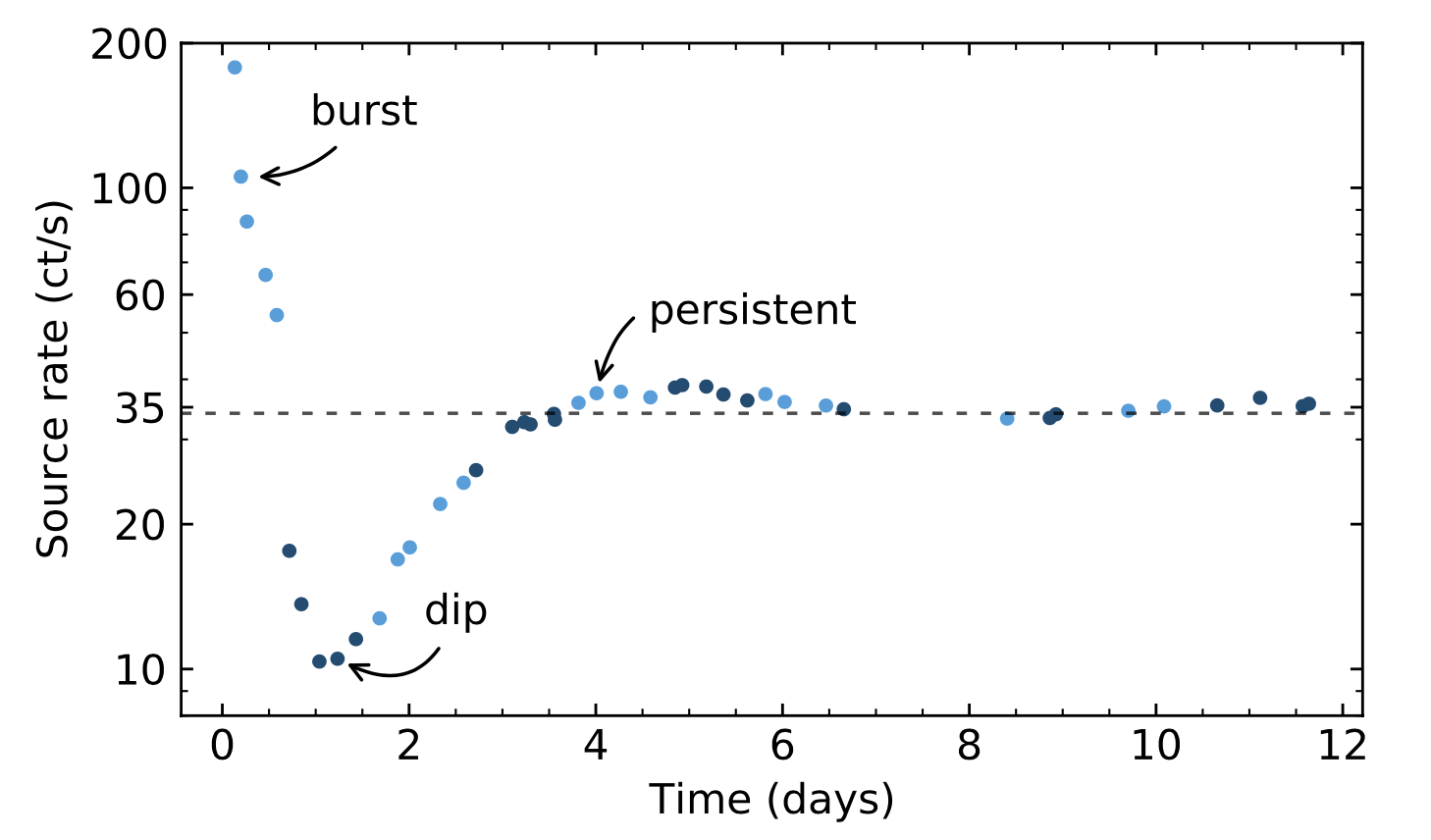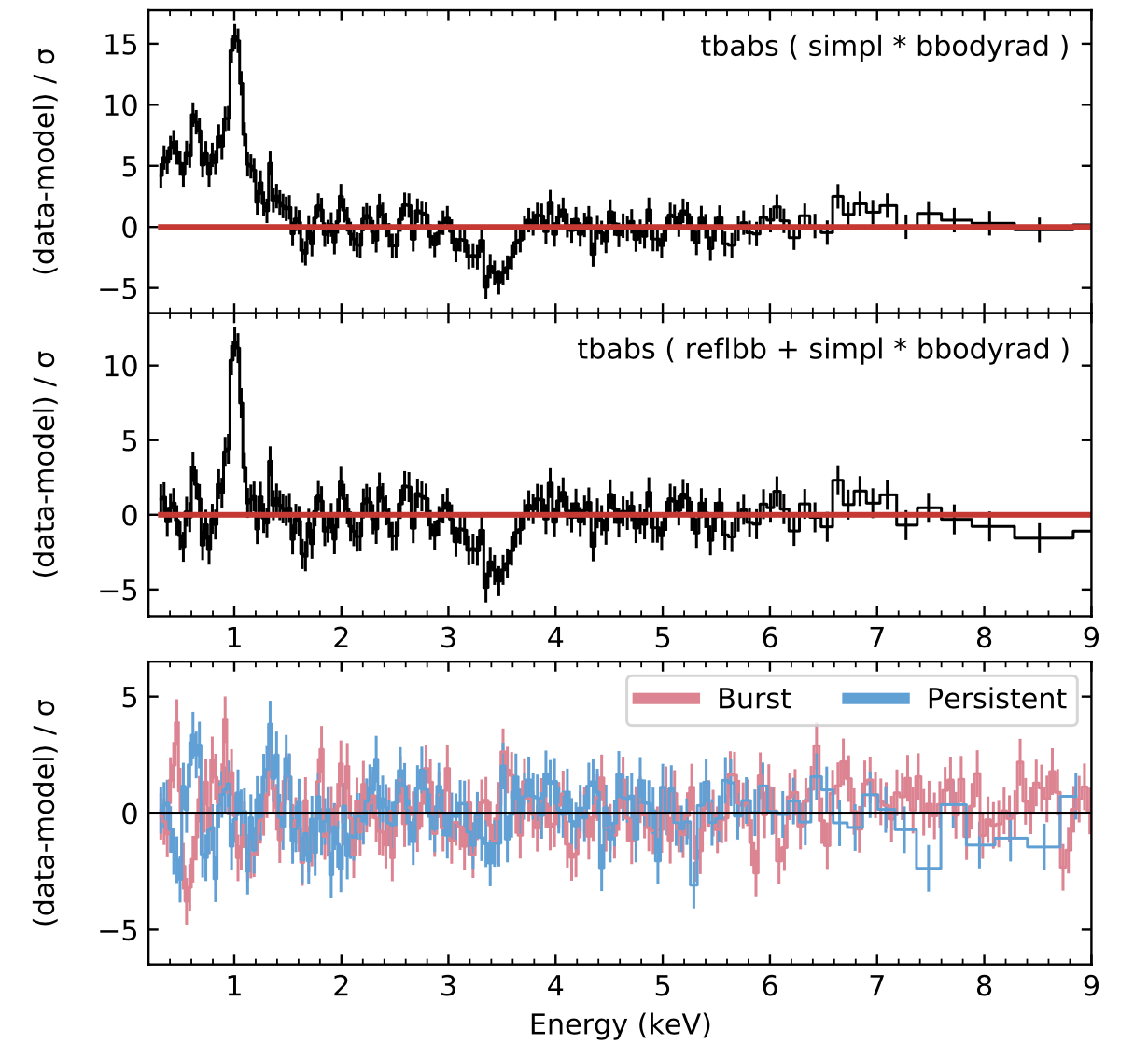NICER / ISS Science Nugget
for July 29, 2021
NICER Tracks Recovery from a Long-duration Thermonuclear Burst on a Neutron Star
As reported here on 2 July, 2020, NICER observations were triggered on 22 June, 2020, by JAXA's MAXI payload, which detected a sudden brightening of the known neutron-star X-ray binary (NS-XRB) IGR J1706.2-6143. This brightening corresponded to a rare long-duration burst of X-rays arising from thermonuclear burning on the neutron star surface, of light-element "fuel" provided by its companion star via an accretion disk. A comprehensive analysis of this dataset, by Dr. Peter Bult (NASA GSFC) and collaborators, has now been accepted for publication in The Astrophysical Journal.
Several new findings emerged from this analysis. After the burst faded, the total brightness of J17062 fell to well below its nominal, long-term "persistent" value (Figure 1), including a pronounced dip that was confined to the highest-energy X-rays. Together, these features suggest that both the accretion disk (generally seen in low-energy X-rays) and the extremely hot "corona" of plasma above the disk were disrupted and depleted by the surface explosion, and later refilled by the flow of matter from the companion star. Also, in the early stages of the burst decay, NICER spectroscopy detected both excess emission near photon energies of 1 keV as well as an absorption feature near 3.4 keV (Figure 2). The latter is likely the consequence of hot near-surface emission shining through heavy-element (calcium or titanium) "ashes" in the debris cloud produced by the explosion.
For this event, NICER was able to interrupt its scheduled observations and respond to the MAXI trigger -- conveyed via email between the two payload operations centers -- within 3 hours, a significant fraction of the burst duration. Such long-duration bursts are among the key scientific motivations for the OHMAN (Orbiting High-energy Monitor Alert Network) capability, currently in development in a JAXA-NASA partnership. OHMAN will link MAXI and NICER through an on-board laptop, resulting in automated NICER commanding on timescales of a few minutes instead of a few hours, enabling unprecedented study of the earliest moments of extreme thermonuclear bursts.


Figure: Left - NICER count rate, in the 0.3-6 keV photon energy band, for IGR J17062 starting from the time of the MAXI trigger on 22 June, 2020. Each point shows the average rate of photon detections from a single continuous pointing, while the colors show alternating days. The black dashed line indicates the average rate observed in August 2020. Right - The top two panels show the spectrum "residuals" -- features that remain after two candidate models of the continuum spectrum are subtracted -- from IGR J17062 during NICER's very first observation of the burst, for an exposure of 472 seconds approximately 3 hours after the MAXI trigger. Two narrow features are evident: an emission line at 1 keV photon energy, and an absorption line at 3.4 keV. The bottom panel shows residuals from the spectra averaged over all subsequent NICER observations (later ISS orbits) on the same day, in which these features have disappeared.
<< Previous
Main Index
Next >>